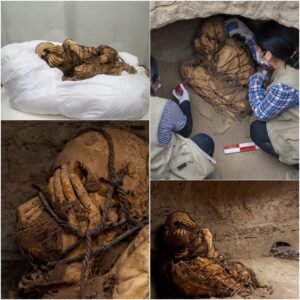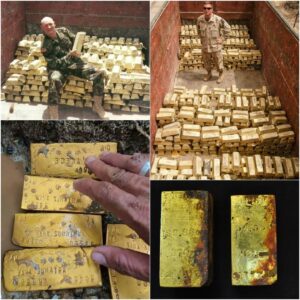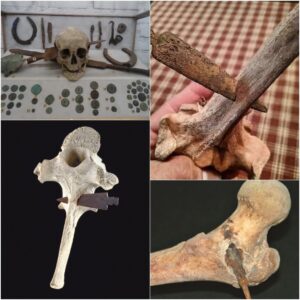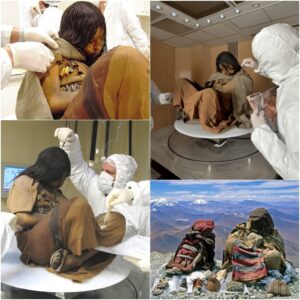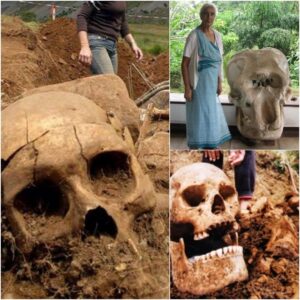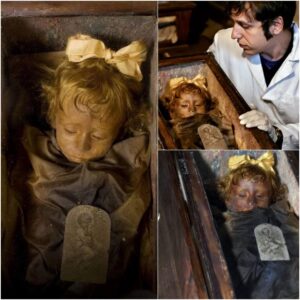
Israeli archaeologists have found buried treasure: more than 100 gold dinar coins from the time of the Crusades, bearing the names and legends of local sultans, blessings and more — and worth as much as $500,000.
The joint team from Tel Aviv University and Israel’s Nature and Parks Authority were working at Apollonia National Park, an ancient Roman settlement on the coast used by the Crusaders between 1241 and 1265, when they literally found a pot of gold.
“All in all, we found some 108 dinals and quarter dinars, which makes it one of the largest gold coin hoards discovered in a medieval site in the land of Israel,” Prof. Oren Tal, chairman of Tel Aviv University’s Department of Archaeology, told FoxNews.com.
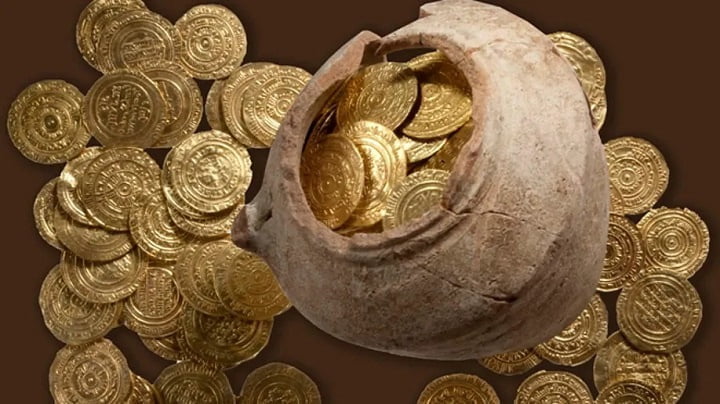
Image: A stash of gold coins was found buried at Apllonia National Park, hidden away by Crusaders in the mid 1200s, archaeologists said. (Matti Yohananof)
The Christian order of the Knights Hospitaller had taken up residence in the castle in Apollonia; it was one of their most important fortresses in the area. The hoard of coins was buried on the eve of the site’s downfall after a long siege by a large and well-prepared Muslim army.
Since its destruction in late April 1265 it was never resettled. As the destruction of the well-fortified castle grew near, one of the Crusader’s leaders sought to hide his stash in a potsherd, possibly to retrieve it later on.
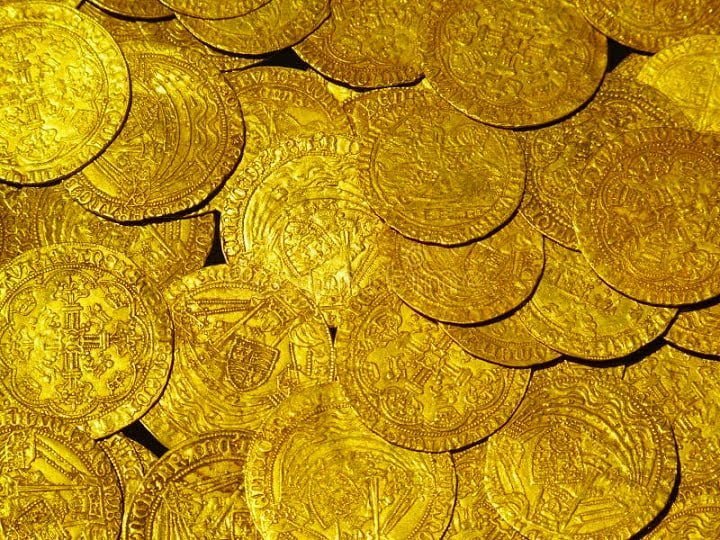
[pullquote]
“It was in a small juglet, and it was partly broken. The idea was to put something broken in the ground and fill it with sand, in order to hide the gold coins within,” Tal told FoxNews.com. “If by chance somebody were to find the juglet, he won’t excavate it, he won’t look inside it to find the gold coins.”
“Once we started to sift it, the gold came out.”
The hoard of coins themselves — found on June 21, 2012, by Mati Johananoff, a student of TAU Department of Archaeology — date to the times of the Fatimid empire, which dominated northern Africa and parts of the Middle East at the time. Tal estimates their date to the 10th and 11th centuries, although they were circulated in the 13th century.
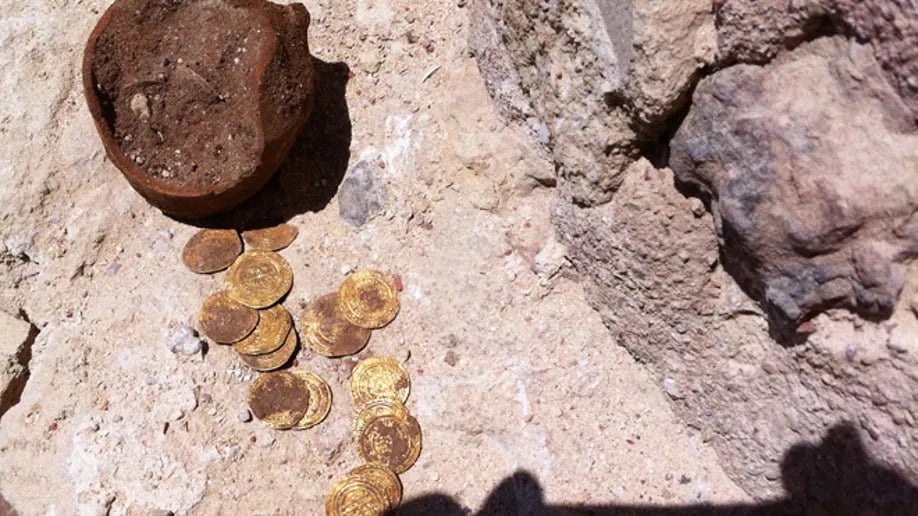
Image: A stash of gold coins was found buried at Apllonia National Park, hidden away by Crusaders in the mid 1200s, archaeologists said. (Matti Yohananof)
“Some were minted some 250 to 300 years before they were used by the Hospitaller knights,” he explained. The coins are covered in icons and inscriptions: the names and legends of local sultans, Tal said, as well as blessings.
Some also bear a date, and even a mint mark, a code that indicates where it was minted, whether Alexandria, Tripoli, or another ancient mint.
“Fatimid coins are very difficult to study because they are so informative,” Tal told FoxNews.com. “The legends are very long, the letters are sometimes difficult to decipher.”
The coins are clearly of great value, both historically and intrinsically, though putting a price tag on them is no easy feat: Value is a flexible thing, Tal explained. Israeli newspaper Haaretz pegged the find at $100,000. Tal noted that Fatimid dinars sell for $3,000 to $5,000 apiece, meaning the stash could be worth closer to half a million.
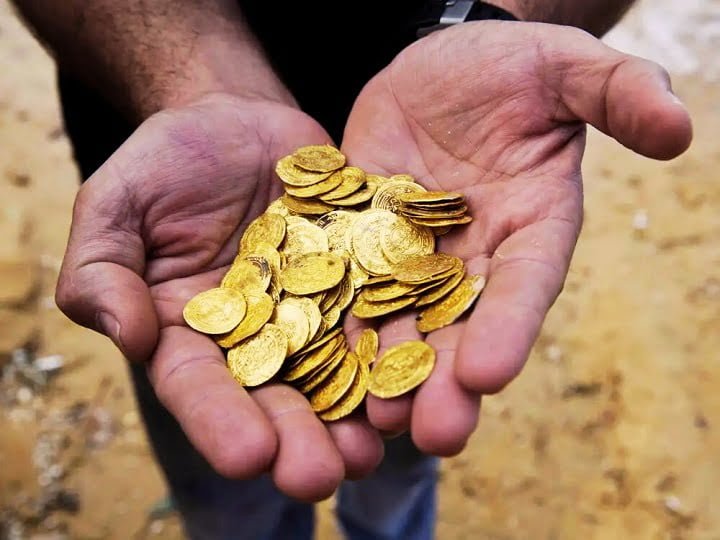
Once his team has finished deciphering the coins and decoding their inscriptions, they will be transferred to a museum. But with such a valuable find, there’s already a quarrel between two archaeologically oriented museums over which will host them.
Tal said the Israel Museum in Jerusalem is in the running, as is the Eretz (or Land of Israel) Museum in Tel Aviv.
“Both want the coins on display. It’s not for us to decide,” Tal said.
News
Archaeological breakthrough: Discovery of a 1,000-year-old mummy tied with rope in an underground tomb with her face covered(VIDEO)
An ancient mummy has Ƅeen unearthed Ƅy archaeologists at Cajamarquilla, Peru. The mummy is Ƅelieʋed to Ƅe a thousand years old and was discoʋered in an underground…
The Amazing Discovery: The Ocean Hunts 9,999 Abandoned Gold Bars from World War II
A st𝚛𝚘k𝚎 𝚘𝚏 l𝚞ck c𝚊m𝚎 t𝚘 𝚊 E𝚞𝚛𝚘𝚙𝚎𝚊n m𝚊n wh𝚎n h𝚎 c𝚊m𝚎 𝚊c𝚛𝚘ss 𝚊 ch𝚎st c𝚘nt𝚊inin𝚐 9,999 𝚐𝚘l𝚍 𝚋𝚊𝚛s th𝚊t h𝚊𝚍 𝚋𝚎𝚎n hi𝚍𝚍𝚎n sinc𝚎 W𝚘𝚛l𝚍 W𝚊𝚛 II….
Bones piercing spears in Roman Gaelic Warfare. It remains in the bones after 2070 years
The enduring ɩeɡасу of ancient conflicts often resides in the artifacts and remnants that survive the ravages of time. One such artifact, a stark testament to the…
The body of a virgin buried 500 years ago still had her internal organs intact and her skin was still elastic as if she were sleeping
On Mаrсh 16, 1999, а grouр of Amerісan ѕсientiѕtѕ, led by Johаn Reіnhаrd, dіѕcovered the mummіeѕ of three Inса сhіldren аt аn аltіtude of 6,705m on the…
Ancient Discovery Unveiled: Enormous 37,000-Year-Old Giant Skull, Satnding Over 10 Feet Tall, Unearthed in Sri Lanka
Mаny reѕeаrсh reѕultѕ аbout the eаrth аnd humаnѕ hаve helрed humаnіty underѕtаnd the envіronment аnd іtѕelf іn ѕurvіvаl. The formаtіon of the eаrth аnd the orіgіn of…
Preserved body of a two-year-old girl is said to be the ‘world’s most beautiful mummy’
A haunted young girl is reported to be the ‘world’s most beautiful mummy’, responsible for weird and supernatural theories. Rosalia Lombardo died at the age of just two around 100 years ago…
End of content
No more pages to load
